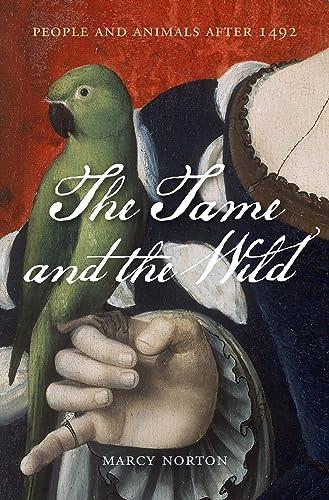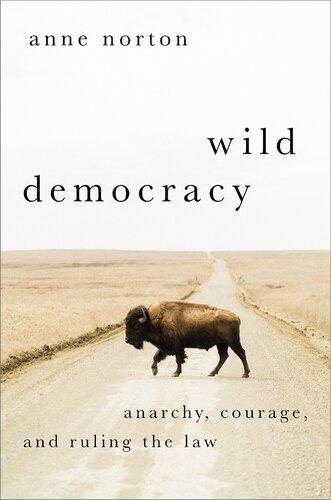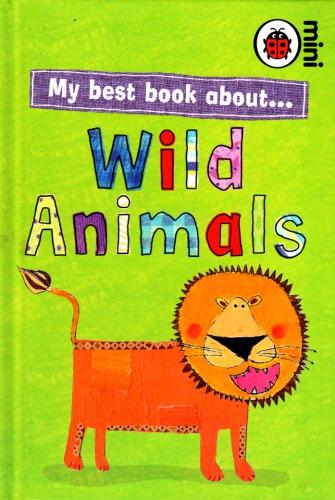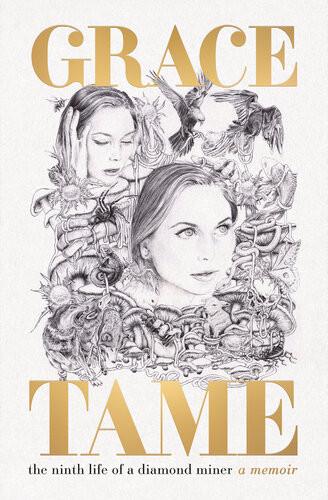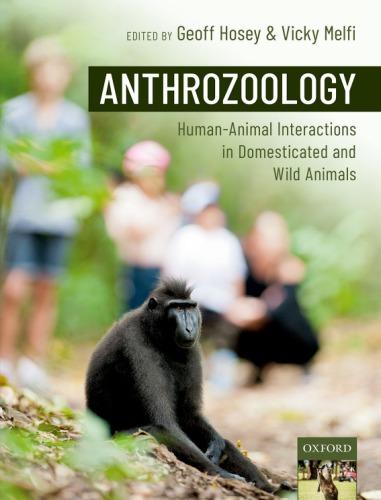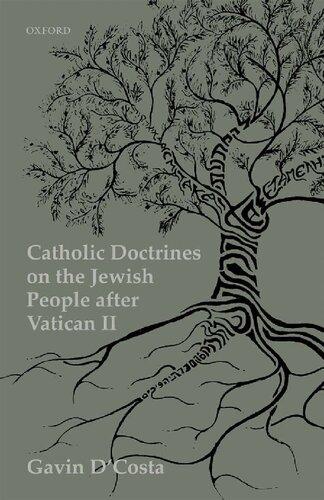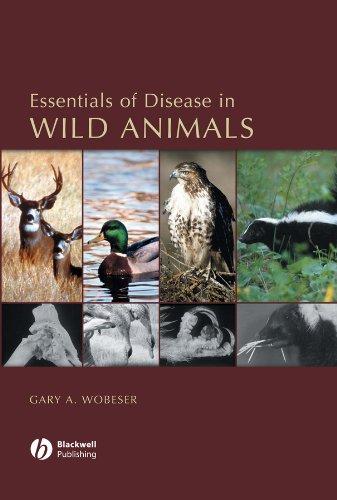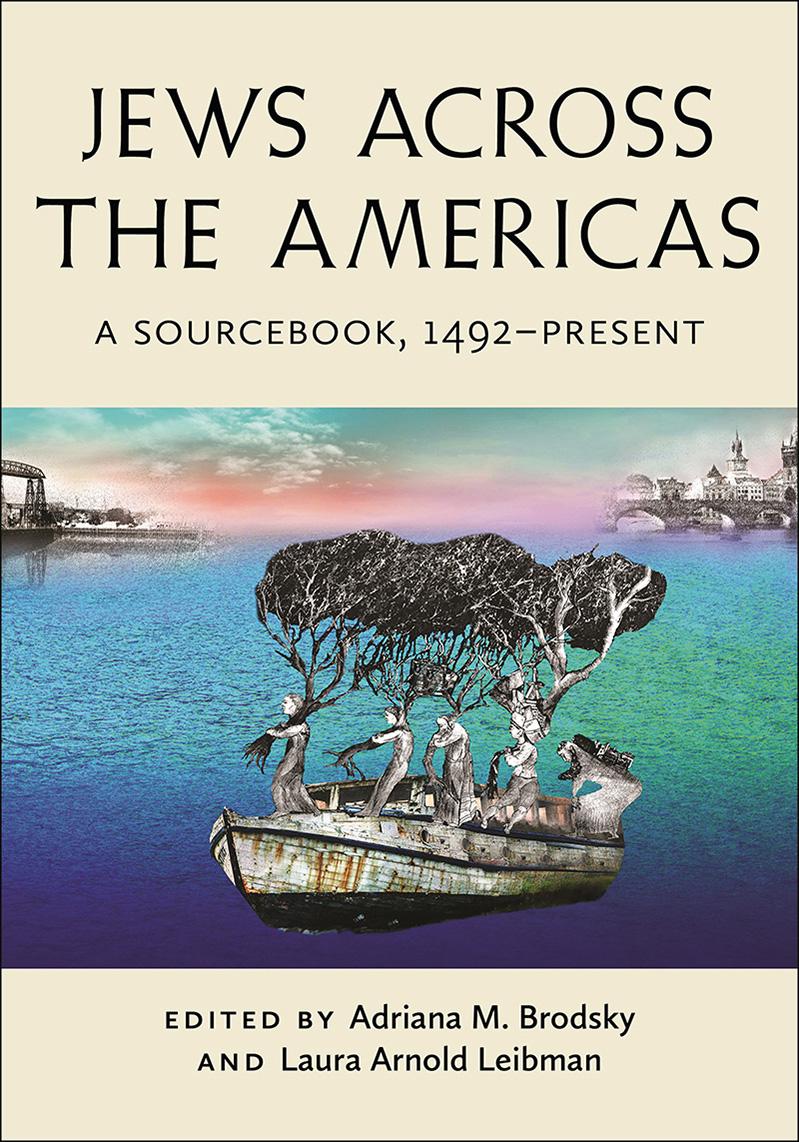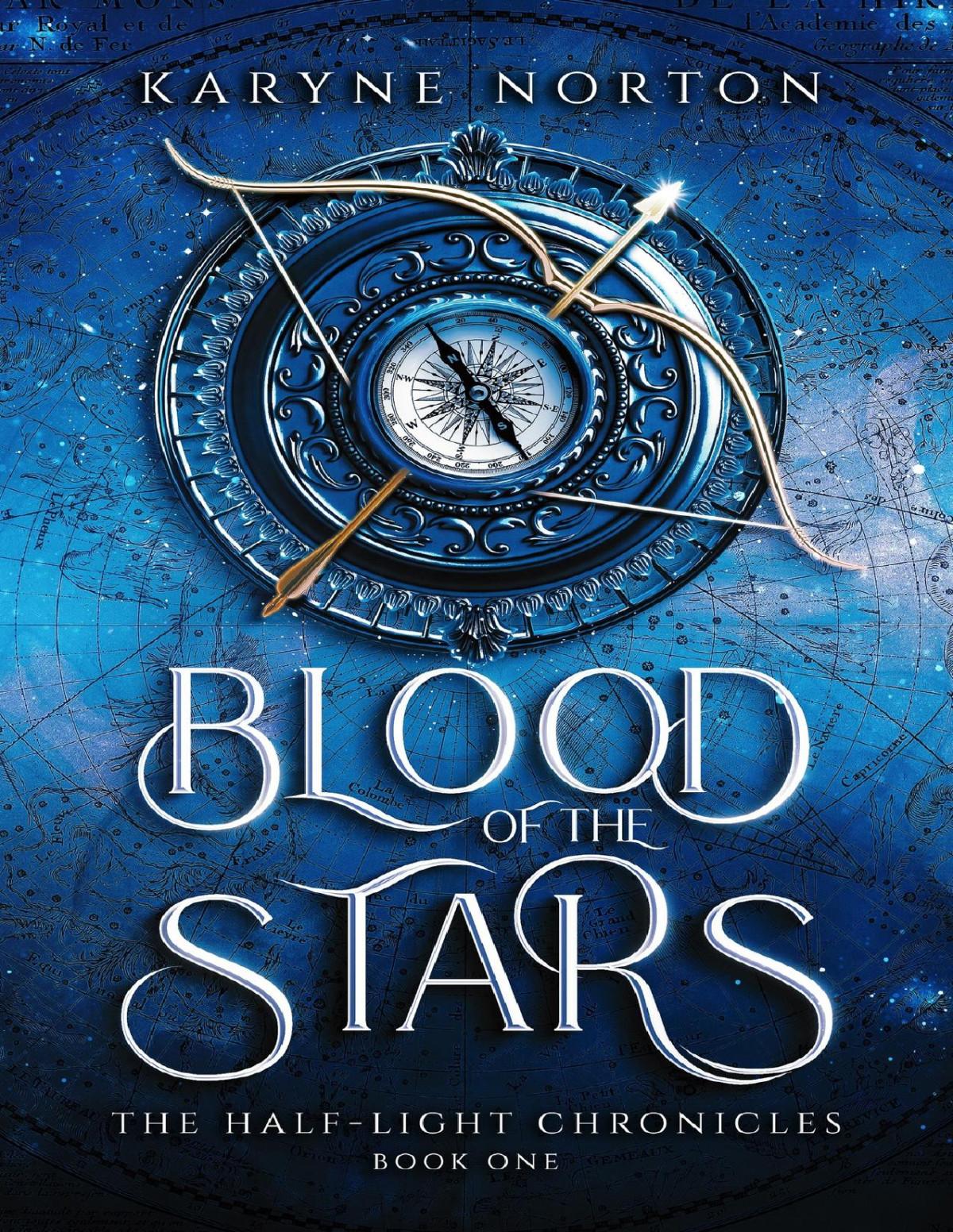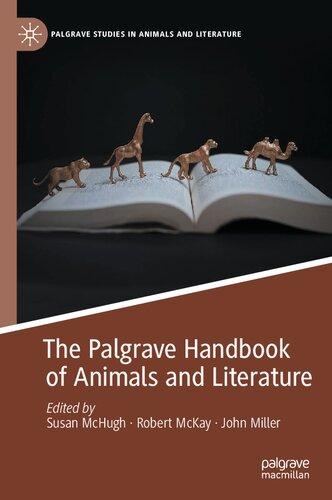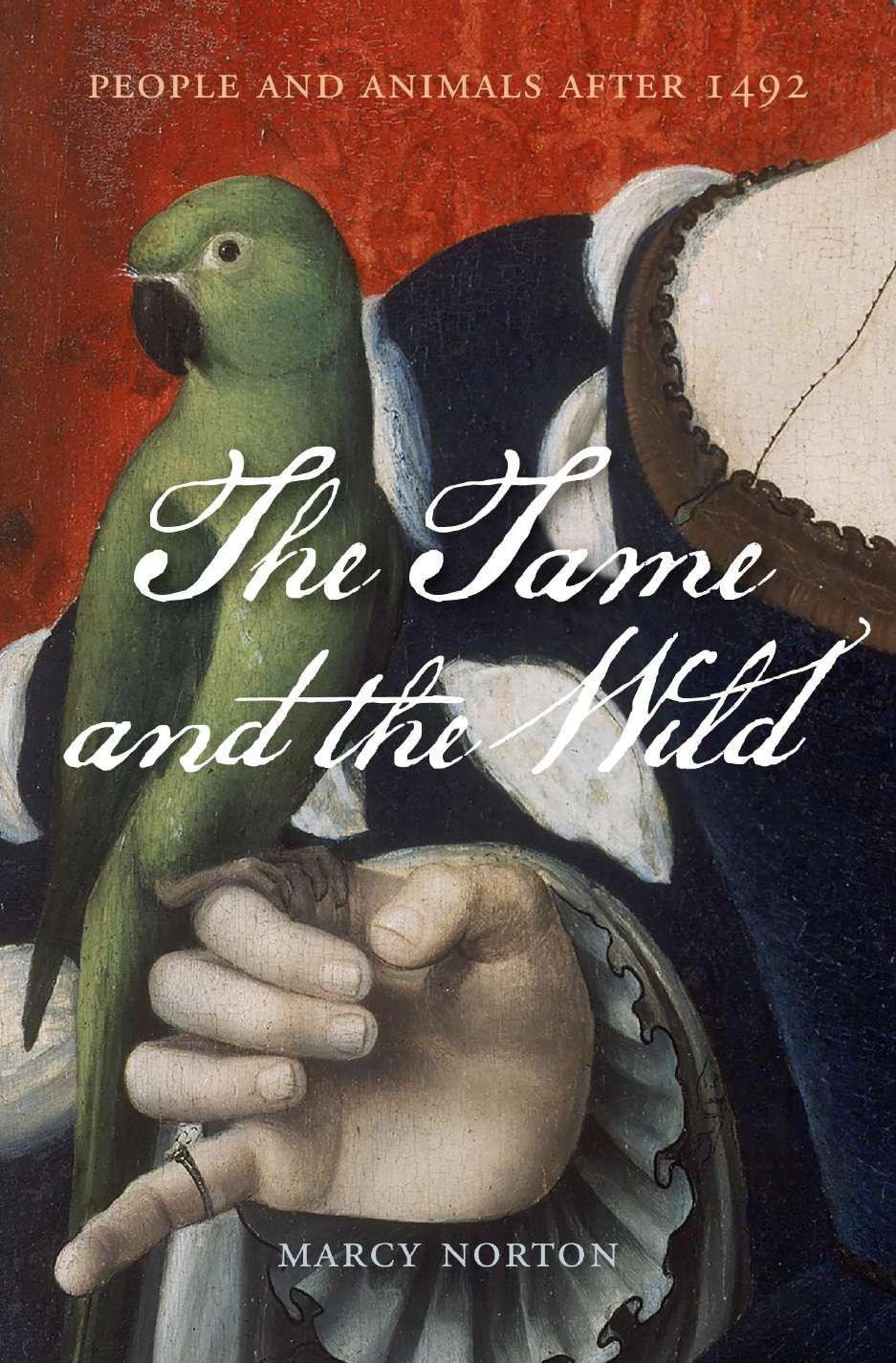The Tame and the Wild
People and Animals after 1492
m arcy n or T on
cambridge, massachusetts · london, england 2024
Copyright © 2024 by the President and Fellows of Harvard College
All rights reserved
Printed in the United States of America
First printing
Cover credit:
Jacket art: Princess Marguerite of Angouleme, c.1530 (oil on panel). © National Museums
Liverpool / Bridgeman Images
Jacket design: Jill Breitbarth
9780674295278 (EPUB)
9780674295285 (PDF)
The Library of Congress Has Cataloged the Printed Edition as Follows:
Names: Norton, Marcy, author.
Title: The tame and the wild : people and animals after 1492 / Marcy Norton.
Description: Cambridge, Massachusetts ; London, England : Harvard University Press, 2024. | Includes bibliographical references and index.
Identifiers: LCCN 2023008306 | ISBN 9780674737525 (cloth)
Subjects: LCSH: Human-animal relationships—America—History. | Human-animal relationships—Europe—History. | Animals and civilization—America—History. | Animals and civilization—Europe—History. | Indians—First contact with other peoples. | Europeans—First contact with other peoples. | Human ecology—Europe—History. | Human ecology—America—History. | Indians—Colonization. | America—Colonization.
Classification: LCC QL85 .N68 2023 | DDC 591.5094—dc23/eng/20230412
LC record available at https://lccn.loc.gov/2023008306
To those who practice caring for all beings
The Tame and T he Wild
Introduction
An ancient account of creation tells of a god who created the elements of the cosmos—night and day, sky and earth, plants and creatures—over a series of days. Some creatures were to live in the skies, others in the seas, and others on the surface of the earth. Finally, this god made a special kind of being, declaring, “Let us make man in our image, after our likeness: and let them have dominion over the fish of the sea, and over the fowl of the air, and over the cattle, and over all the earth, and over every creeping thing that creepeth upon the earth.”1 This powerful story continued to hold sway in Europe centuries after it was first written (fig. I.1).
Across the Atlantic Ocean, people also told stories about the origins of the earth and its inhabitants. In a Nahua account, creation began when two deities transformed themselves into gigantic snakes and ripped an enormous amphibian in half. The sundered reptilian body became the earth itself, a fertile and blood-thirsty organism who catalyzed the detritus of death into the matter of life. Sometimes, in pictorial sources, she appears only as a gaping, feeding maw (fig. I.2).
A European, attempting to understand these beliefs, explained that “the earth was considered to be a goddess, and they painted it like a fearsome frog with mouths in all of the joints full of blood, saying that it ate and drank and swallowed everything.”2 On the Caribbean island of “Aitii,” the jobo trees (Spondias lutea) that bore savory, bright yellow fruit were descendants of cave-dwelling ancestors who had gazed too long at the sun.3 Birds known for their plaintive morning song descended from ancestors who had stayed out fishing until dawn. Frogs whose cries sounded like those of babies had once been human infants, hungry to nurse, who were abandoned by their mothers near a brook. Plants, animals, and even mineral formations descended from people.
These divergent creation stories reflect radically different ideas about humans’ relationships to other kinds of animals. In Genesis, the force behind
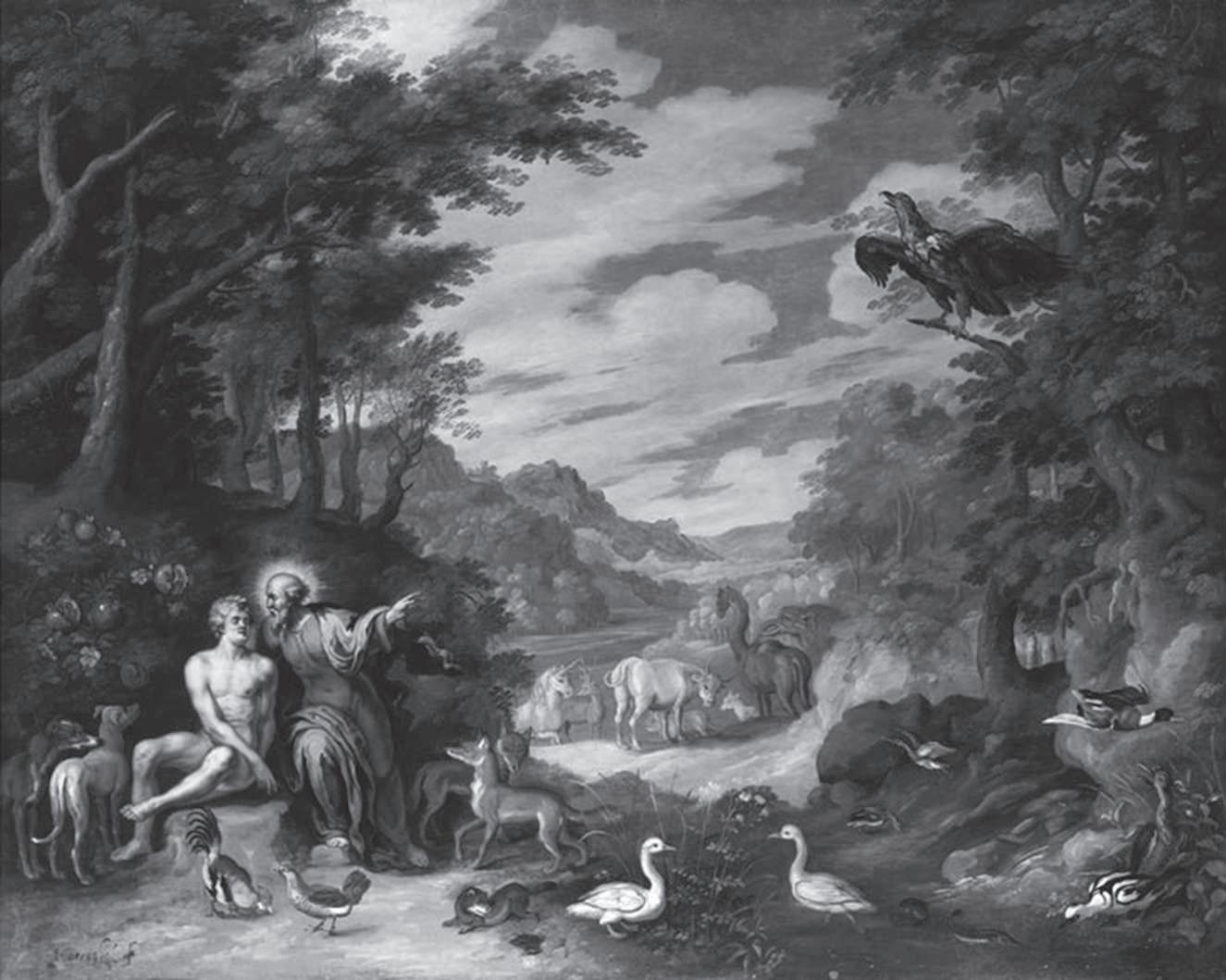
creation was a singular, anthropomorphic Creator, whereas in the Indigenous stories, the forces tended to be multiple and zoomorphic. Genesis makes a clear-cut divide between people and other kinds of beings—with each class of being created separately—but Indigenous accounts depict creation as, fundamentally, a process of transformation, one that emphasized the permeability and interconnectedness of all beings. Genesis presents the singularity of people—unique because they alone were made in the image of this God—whereas Indigenous creation stories show all kinds of beings possessing subjectivity or personhood. Genesis insists on humans’ superiority, given their proximity to God and preordained “dominion,” while Indigenous creation stories that tell of animals’ and plants’ human ancestry highlight kinship across species. In this system, animals and plants were relations, not resources.
Undergirding these creation stories are “modes of interactions”—my phrase for the structures that organize how people relate to and think about
Figure I.1 Jan Brueghel the Younger, Adam’s Creation in Paradise, oil on copper, 69.9 × 87.5 cm, seventeenth century. Hampel Fine Art Auctions.
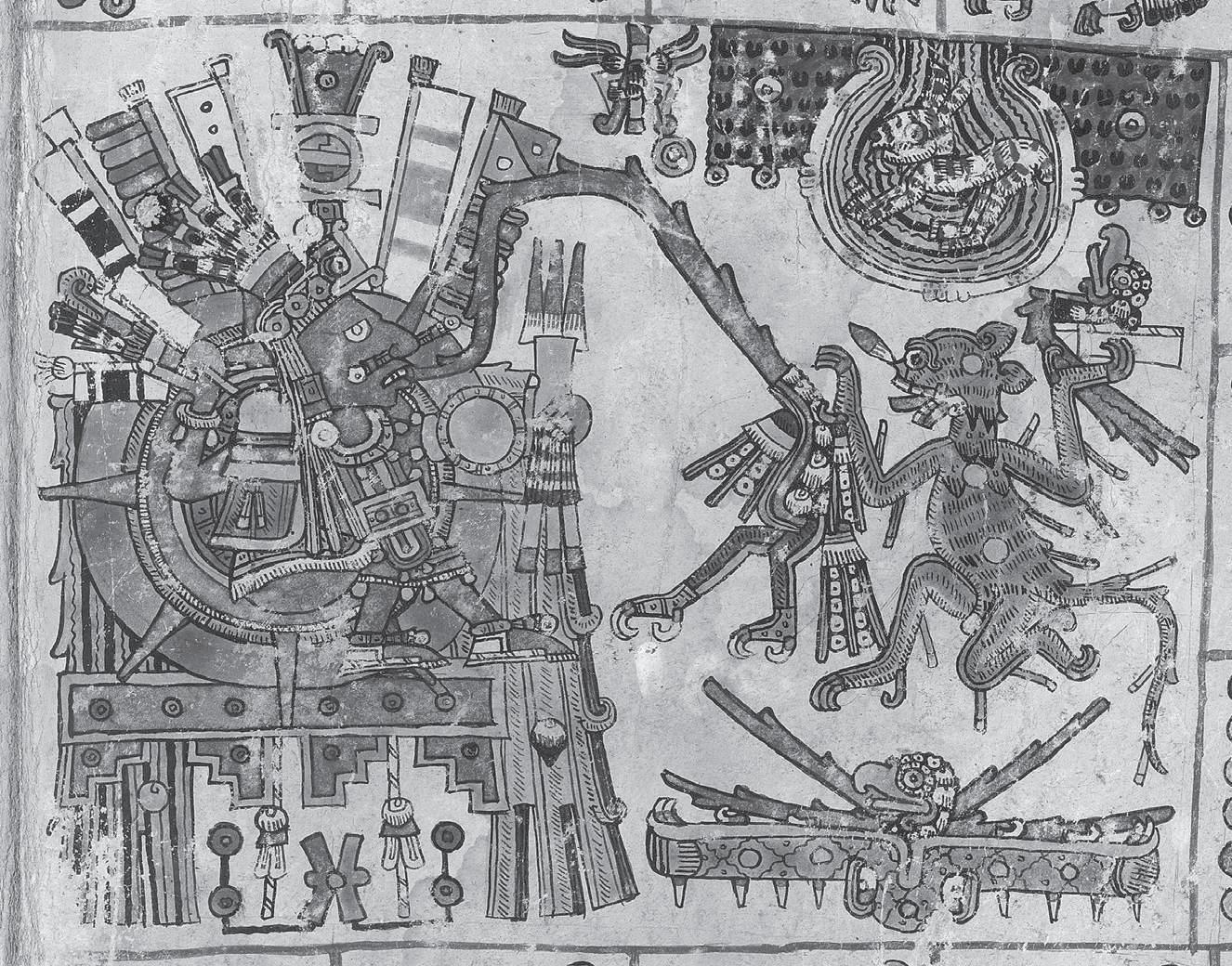
other animals. Developed over millennia, modes of interaction include the entrenched customs, patterns of behavior, institutions, and, above all, quotidian technologies that people used to observe, listen to, capture, nurture, kill, eat, tan, breed, herd, train, communicate with, feed, or heal other beings.4 This book is about such modes of interaction, how they help explain the ontological divide between European and Indigenous cultures, and how these differing modes’ post-1492 entanglement led to transformations—both destructive and generative—on both sides of the Atlantic. Although these creation stories have largely been supplanted by the Big Bang and evolutionary theory, the modes of interaction that underlay these ancient accounts are still part of the fabric of modern life. Many of the horrors of the present day—colonial dispossession, environmental catastrophe, and the abject conditions endured by animals classified as livestock—are rooted in them. Likewise, many pleasures of the present day—kinship across the species divide,
Figure I.2 A skeletal coyote (death) decapitates and feeds a quail to the sun and earth, Codex Borgia, plate 71, detail, pre-1500. Borg.mess.1.f.pl 71r, photo © Biblioteca Apostolica Vaticana. Reproduced by permission of Biblioteca Apostolica Vaticana, all rights reserved.
wonder at the faculties of nonhuman animals, and consumption of animal flesh—originate with them.
˜hunting and husbandry were the most significant modes of interaction organizing human-animal relationships in Europe and the Mediterranean in the early modern age. Ecologically informed and socially created over the longue durée, they were differentially linked to other structures of power. Elite hunting, caza or montería in Spanish, was integrally associated with dynastic warfare and crucial to the tactics and ideology of the aristocratic ruling class and upwardly mobile, wealthy commoners. Animal husbandry, or ganadería in Spanish, organized the labor and activities of the plebeian majority and provided income and products for the Church, nobility, and wealthy commoners. It was a building block of subsistence and market economies and a defining structure of European and Mediterranean societies for millennia. However, hunting and husbandry created different kinds of relationships between humans and other animals. The hunt fostered the recognition of (certain) animals as subjects, whereas livestock husbandry produced human subjects and (mostly) animal objects. Hunting created a privileged class of vassal animals; horses, hawks, and hounds were engaged as essential collaborators and noble beings, invested with individuality, material resources, and symbolic value that elevated them among many human contemporaries. Prey, too, were understood as intelligent, cunning, and often dangerous adversaries. In contrast, husbandry made livestock into objects whose beingness was largely negated, even while alive. In addition to many other uses, livestock became food (their muscles and fat became flavor and protein), clothing (sheep’s coats became wool, cow skins became leather), lighting (the fat of cows became tallow), and medicine (cow, pig, and chicken fat became ingredients in recipe books). These animals, along with plants and minerals, belonged to the domain of “nature,” and were thus viewed above all as resources necessary to keep the human body alive and comfortable. They were most often constituted as things—bodies denied living spirit—and objects of passive management rather than active engagement.
Across the Atlantic, in Greater Amazonia (a term I will use to refer to Indigenous regions in both the Caribbean and lowland South America) and Mesoamerica, the primordial modes of interaction were “predation” and
“familiarization.” In part, I use these outsider (“etic”) concepts to reflect my engagement with an extensive anthropological literature concerning Amazonian cultures.5 However, I also employ these terms because they align with ideas and concepts articulated in early modern sources that reveal Indigenous perspectives. These sources emphasize all beings’ dependence on nourishment and uphold distinctions between the categories wild and tame rather than those of “human” and “animal.” Predation, above all, produced food. Human and nonhuman hunters alike obtained prey for nourishment. Humans cooked meat to supplement diets centered on cultivated manioc, maize, or both. Humans also valued the nonputrefying parts of animals, above all, feathers, pelts, and bones, which were also assimilated into the body. They were affixed directly to the skin or refashioned into potent ritual objects, such as headdresses, necklaces, or flutes. These objects allowed the wearer to appropriate some of the beauty and power of the prey, perhaps even take on what Eduardo Viveiros de Castro famously called the “enemy’s”—or rather the prey’s—“point of view.”6 Indigenous predation emphasized how hunting transformed both predator and prey by way of mimesis during both the hunt and the consumption following it. It was integrally related to human warfare, as is expressed in the vocabulary of Indigenous languages in both regions that employed the same word for hunting and for warfare.7 While Europeans insisted that hunting was like warfare, people in Greater Amazonia and Mesoamerica, by and large, spoke of warfare as hunting. One of the reasons I choose to use the term predation to refer to Indigenous practices related to the pursuit and acquisition of animals for various kinds of consumption is to distinguish it from European hunting. Another way that hunting and predation differ is that while dogs assisted in hunts in other parts of the Americas (including highland regions in South America), they did not play this role in the regions explored in this book, at least in the time period prior to 1492.8 Without the mediation of vassal animals, Indigenous hunters had a more direct relationship with prey. While predation in Greater Amazonia and Mesoamerica shared many attributes, it also differed in some fundamental respects. These differences relate to social organization: Like those in Europe, Mesoamerican communities were intensively stratified in comparison to the relatively egalitarian social structure that generally characterized Greater Amazonia. Perhaps even more than the European nobility who prized their status as hunters, Mesoamerican elites invested in their predatorial identities. In addition to pursuing hunting as a pastime, these elites also monopolized meat and coveted
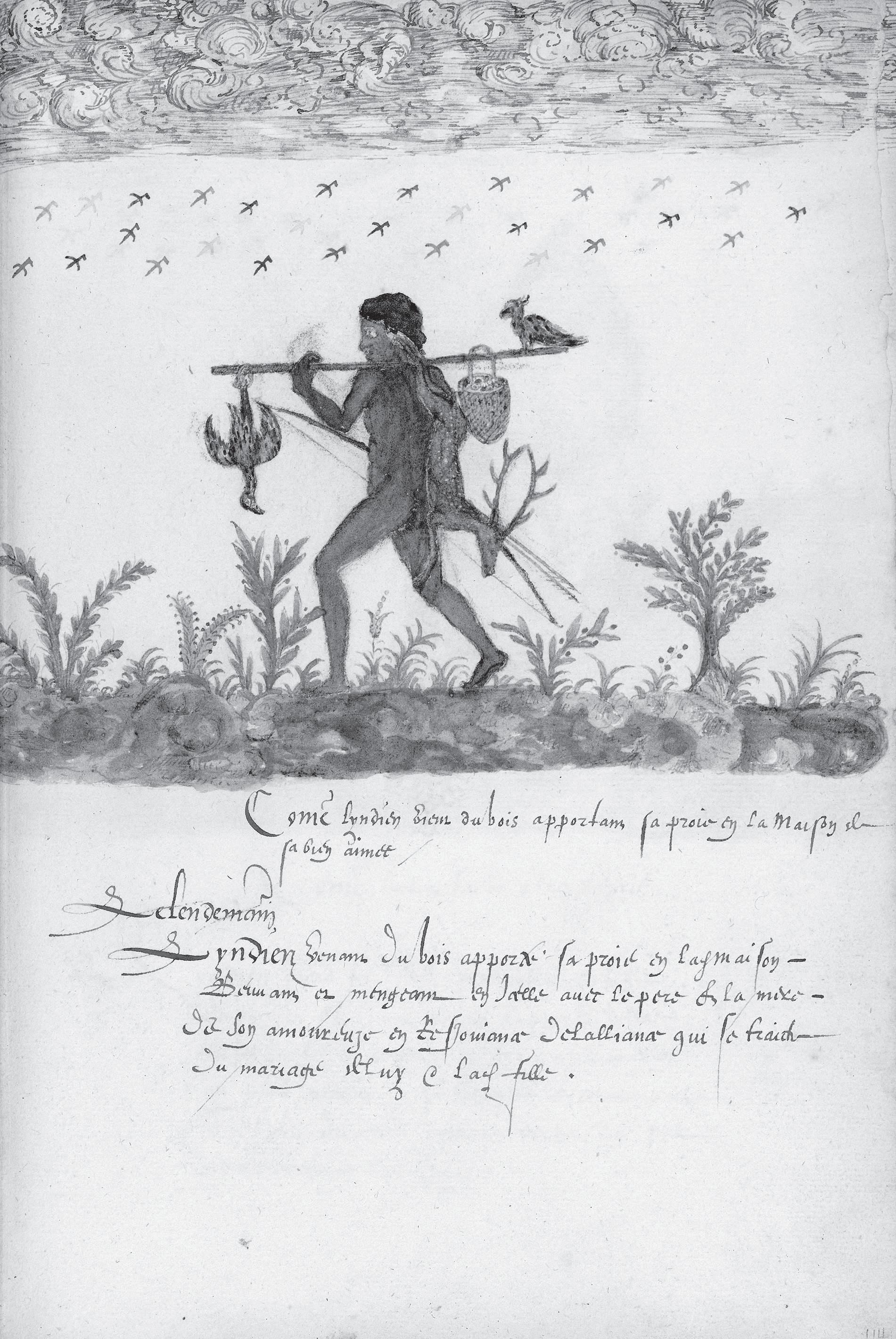
Figure I.3 An Indigenous hunter returning with a dead bird and a live bird, Histoire Naturelle des Indes, illustrated manuscript, ca. 1586, Morgan Library, bequest of Clara S. Peck, 1983, MA 3900, fols. 113v–114r. Morgan Library and Museum, New York.
skins and feathers, restricting commoners’ access to these items. In contrast, in Greater Amazonia, as a rule, any man could hunt or fish, and doing so was an important aspect of masculinity (fig. I.3).
Whereas hunting and husbandry existed in uneasy tension in Europe, predation and familiarization were complementary modes of interaction in Greater Amazonia and Mesoamerica. If predation centered on making others into food, familiarization centered on providing food to others. In Greater Amazonia, some wild animals were captured live (or sometimes they came of their own accord), and tamed: they were made into kin. Parrots, monkeys, deer, tapirs, sloths, capybara, manatees, and even humans, were among the many species that became familiarized. In contrast to domesticated creatures, these animals were born in the wild, and their reproduction was not controlled. Familiarization was customarily the work of women in charge of creating new members of the community. It encompassed the care given to a newborn baby, a stranger from another land, or an animal captured in the wild. The essence of making kin is feeding, as pithily articulated by the seventeenth-century missionary who defined the Kalinago word and concept iegue as “an animal whom one feeds.”9 Once a fellow being was fed and accepted food, they were iegue, and once iegue, they were to be cherished, not consumed as food. From this perspective, the essence of European livestock husbandry—feeding animals to make them into food—makes no sense at all. Both the interdependence of and differentiation between familiarization and predation in Greater Amazonia are evocatively depicted in a late sixteenth-century painting made by a presumed outsider (the illustrator is unknown): a hunter returns with two birds, one to be eaten and one to be fed (fig. I.3).
Like predation, Mesoamerican familiarization is both similar to and different from its South American counterpart. A concept similar to iegue appears in Mesoamerican vocabularies. In Nahuatl the term is tlatlacacihuitilli. The familiarization practices that accompanied this concept—above all those related to the sacred calendar and the participation of nonhuman animals in religious ceremonies known in Spanish as veintena—have been even less visible than those related to iegue in Greater Amazonia. This is the case even though familiarization of this sort underpinned the famed menageries of Tenochtitlan and other city-states in Mesoamerica. Part of the reason for such practices’ invisibility to outsiders may be related to a fixation on practices that both European colonizers and today’s scholars misleadingly labeled as “sacrifice.” While it was anathema to kill a being who was fed in
Greater Amazonia, in Mesoamerica some captive, formerly wild animals were killed, among them humans.10 The practice of killing animals who have been fed is the most significant distinction between familiarization as practiced in the two regions.
That “sacrifice” was a form of familiarization from an insider (“emic”) perspective can be seen by looking at imagery in the Codex Borgia, an amoxtli (pictorial “book”) crafted in the Central Highlands prior to the invasions. A prominent panel depicts one of the most common and important rituals: the killing and feeding of a decapitated quail to deities (fig. I.2). The figure occupying the position of the killer and feeder is depicted as a super predator; part coyote (carnivore) and part skeleton (death). This scene shows the moment immediately after the coyote-skeleton twisted off the quail’s head, when he holds the bird’s body in one hand, and the head in another. It also shows what happens next: at the same instant, the bird’s blood spurts out of the body and up into the mouth of the solar deity, rendered as a personified reddish orb, and the head drops into the open maw of a reptilian monster, identified with the earth. The image demonstrates the intertwining of killing and feeding, and shows that the powerful beings most responsible for creating food—sun and soil—must themselves be fed. As this illustration suggests, the notion of reciprocity was fundamental to Mesoamerican predation and familiarization.
As suggested by European and Indigenous origin stories alike, modes of interaction are powerful structures for creating subjectivities. They condition how people experience being in their worlds (ontology) and what they know (epistemology). The ways that people relate to other animals—whether following a hunting dog, mimicking a monkey’s call, caressing a pig, defanging a rattlesnake, dancing in a quetzal feather headdress, buying cow flesh at a butcher, collecting fruit for a macaw, hand-feeding a deer, apologizing to a horse—are generative of how people understand themselves and others. How people categorize, think about, and learn from other animals stems from the contexts in which they interact with them. An investigation of modes of interaction reveals the conditions that allow for the recognition or the denial of another’s subjectivity. The interactions generated by animal husbandry were an important “cause” of Europeans’ sense of separateness from other kinds of animals and their sense of a self divided between mind and body. In contrast, predation and familiarization in Indigenous America revealed commonalities across the species divide and recognition of the materiality, permeability, and contingency of the self.
˜the tame and the Wild challenges the enduring and insidious myth that livestock husbandry is a necessary and inevitable part of human progress.11 This idea has ancient roots—the biblical story of Jacob and Esau can be read as the triumph of the farmer over the hunter—but the notion of animal domestication as a boundary between “civilized” peoples and primitive “barbarians” took hold as Europeans began to invade the Americas and justify their brutal military campaigns and dispossession of Indigenous land, labor, and life. In 1513, one of the jurists King Ferdinand tasked with finding a legal rationale for Spanish conquest focused on how indios in the Antilles interacted with animals: they eat “fish but not meat, other than little animals similar to hares,” and “they love like children their domestic birds and animals and do not eat them because that would be like eating their progeny.” Such behavior was among the evidence he marshaled to show that indios lacked “reason” and “in this they are no different from the animal.”12 Juan Ginés de Sepúlveda, one of the most famous proponents of the idea that Indigenous people were “natural slaves,” argued in 1544 that just as the body is subject to the soul, “the appetite to reason, and brute animals to man,” so should “barbarians, uncultivated and inhuman,” be subjected to the imperio of those who are “more prudent, powerful, and perfect.” While he acknowledged that the justifiable war waged against “barbarians” would cause great “harms and losses,” it was outweighed by “greater goods” they would receive in the form of salvation, iron tools, and domesticated animals—the “horses, mules, asses, oxen, sheep, goats, pigs.”13 This idea was further entrenched in the progressivist narratives of seminal Enlightenment thinkers and nineteenth-century scholars who claimed that domestication “perhaps more than to any other cause we must attribute the civilizable and the civilized state of mind.”14
This assumption that animal husbandry is a necessary milestone and marker of advanced civilization continues to shape both modern scholarship and popular perceptions in the present. Scholars who would reject any overt notion of intrinsic European cultural superiority still take for granted the idea that the Eurasian style of animal domestication is a natural and inevitable component of progress. Alfred Crosby wrote in his groundbreaking Columbian Exchange that “when Columbus arrived, even the most advanced Indians were barely out of the Stone Age. . . . They had few domesticated animals, and those were not very impressive.”15 Jared Diamond built on this notion when he wrote, “Did all those peoples of Africa, the Americas, and
the tame and the wild
Australia, despite their enormous diversity, nonetheless share some cultural obstacles to domestication not shared with Eurasian peoples?”16 He seemingly settles on a less Eurocentric conclusion by rejecting the notion of a cultural “obstacle” to domestication and instead argues that the native species of Africa, Australia, and the Americas were not suitable “candidates” for domestication.
The assumption that only obstacles would explain non-Eurasians’ failure to fully embrace domesticated animals reinforces the ancient belief that human progress depends on animal domestication. The idea that domestication is a mark of advanced culture is even evident in scholarship about Indigenous America. The cultures of Mexico and Peru, because of their cities, states, writing systems, priesthoods—and their domestication of turkeys and llamas—have been judged more advanced than the “primitive” lowland cultures of Amazonia that lacked domesticated animals. Even more subtly, the naturalization of livestock has shaped historical scholarship by normalizing the objectification of animals and neglecting practices that emphasize nonhuman subjectivity. This perspective can be seen in the long tradition of scholarship that assumes an instrumental approach toward animals is more natural than one characterized by care and appreciation.
˜how is historical perception, understanding, or scholarship transformed if livestock husbandry is no longer assumed to be more advanced, natural, or inevitable than other modes of interaction? What happens when livestock husbandry is denaturalized and “provincialized”?17 In other words, what happens when livestock husbandry is no longer viewed as the most natural and self-evident way for people to interact with other animals and is instead considered as a particular arrangement that developed in particular times and places?
The Tame and the Wild reassesses the transformations wrought by colonization on both sides of the Atlantic and suggests a reevaluation of many of our dominant narratives about the history of the environment, religion, science, and subjectivity. The Tame and the Wild demonstrates how European and Indigenous ontologies and epistemologies—rather than occurring in separate historical silos—have been entangled since 1492.18 It is a corrective to the histories of early modern Europe that still pay inadequate attention to the transformative effects of Europeans’ entanglement with Indigenous
11 cultures. Likewise, anthropological studies of contemporary Indigenous communities often ignore the degree to which current-day cultures, both European and Indigenous, have been transformed by more than five hundred years of entanglement.19 American modes of interaction not only conditioned how Indigenous people—as well as free and enslaved people of African descent—responded to colonialism. They also affected colonizers and contributed to changes within European societies.20
Rather than approaching these questions within a framework of “Columbian Exchange,” The Tame and the Wild connects the histories of nonhuman animals to histories of dispossession and extractivism.21 Although conquistadores believed that their nonhuman vassals were their most powerful weapons in wars against Native communities, the most important instrument in the process of dispossession was livestock husbandry. Colonizers not only imported but transformed animal husbandry. Beginning in the fifteenthcentury Caribbean, European colonizers reinvented animal husbandry as an extractivist industry that became the basis of settler colonial fortunes.22 Livestock husbandry became the linchpin connecting the dispossession of Indigenous labor, land, and life and contributing to the compounding conditions that led to the stratospheric death toll among Native peoples. As such, this book contributes to the deep history of modern meat. Global consumption of meat is the second largest source of climate change; it poisons soil and waterways, destroys wildlife habitats, and confines and kills billions of chickens, pigs, and cows. Some historians see the roots of modern meat in the deep hominid history of hunting, animal domestication, and development of patriarchy, whereas others understand it primarily as a product of early or late capitalism.23 The Tame and the Wild focuses on developments occurring in between, thereby illuminating the deep origins of livestock husbandry’s ethos that constructs and separates human subjects from animal objects. In alignment with those who see the emergence of the “Anthropocene” as an effect of European colonization, this study also reveals the degree to which the contemporary ecological catastrophe originated with the earliest colonization of the Americas.24
For all of its destructive power, however, extractivist livestock husbandry did not extinguish Indigenous modes of interaction. Native peoples responded to the arrival of European modes of interaction and livestock animals in ways consistent with extant modes of predation and familiarization. In some cases, they adopted European warfare and hunting practices organized around vassal animals, riding horses in battle and using dogs to hunt.
They did so not only for pragmatic ends but also because these practices aligned with their existing modes of interaction that recognized the subjectivity of nonhuman animals. Nevertheless, when free to choose, Indigenous people in Greater Amazonia generally rejected animal husbandry, abhorring the practice of killing animals whom they fed. However, the rejection of animal husbandry did not preclude the embrace of European domesticated animals. Indigenous peoples accustomed to familiarization found creative and often ingenious ways to incorporate European-originating animals into their modes of interaction.
These material and ecological histories are inseparable from the entangled histories of epistemology, religion, and science that also unfold in these pages. Given the different practices and ideas about human and nonhuman subjectivity generated by different modes of interaction, it is unsurprising that these entanglements had epistemological and even ontological consequences. In revisiting demonological discourses, I suggest that European anxieties about witches and Hell reflect suppressed and repressed anxieties about the subjectivity of nonhuman animals. In turn, the ethos produced by livestock husbandry hindered missionaries’ ability to comprehend the species boundary-crossing beliefs and practices produced by Indigenous modes of interaction. As a result, they projected demonological discourses onto Indigenous practices and beliefs, bringing, one could say, enchantment to the Americas.
No less consequential than the colonizers’ epistemological exports were their epistemological imports. Native hunters and animal tamers—those engaged most directly in predation and familiarization—learned about the behaviors, habits, and appearances of animals, as well as their relationships to broader ecological networks. Moreover, the amoxtli (fig. I.2) reveal that this knowledge, at least in Mesoamerica, related to abstract ideas sharing elements with modern ecological concepts. Some of this Indigenous knowledge was used by colonizers and filled the pages of influential works on natural history, such as those by the conquistador Gonzalo Fernández de Oviedo. However, the consequences for the history of science go beyond European incorporation into natural histories of Indigenous knowledge generated by hunters and tamers. Colonizers’ appropriation of Indigenous knowledge produced by predation and familiarization also bore epistemological effects. Crucially important was the work of the Nahua scholars who coauthored a natural history—what became Book 11 of the Florentine Codex—that integrated European genres and Mesoamerican ecological concepts.25 In turn,
the Spanish naturalist Francisco Hernández appropriated, disavowed, and transformed this knowledge into a form that inspired new forms of zoological inquiry in seventeenth- and eighteenth-century Europe—epistemological changes that form part of the so-called Scientific Revolution.26
Finally, these entanglements reveal the myriad ways that people on both sides of the Atlantic cherished affective relationships with nonhuman animals long before the emergence of the modern pet. They show the joy and pleasure that such relationships afforded and the care work that they required. Aristocratic hunters cherished their raptors, horses, and dogs, while shepherds developed intense attachments to their dogs and to a select few sheep or goats classified as mansos (tame ones) and were horrified at the thought of killing them. Nevertheless, the vast majority of domesticated animals in Europe—those classified as livestock—were not eligible for such relationships. The pleasure that Europeans found in their bonds with nonhuman animals was generally a by-product of collaborative relationships, such as those required by hunting or herding, while in many parts of Indigenous America, the joy of nonhuman companionship could be an end in itself. This is suggested by the name that a sixteenth-century Tupinamba woman gave to her macaw (Cherimbaue, or “thing that I love”), a tamed manatee who provided “joy to the whole Island” of Hispaniola, and three pigs whose Indigenous companion called them “my friends and good company.” Colonizers themselves became enmeshed in relationships mediated by familiarization. This process began when Columbus accepted a gift of tame parrots upon making landfall in the Bahamas. It continued when tamed animals themselves, nurtured by Indigenous women, arrived in Europe.
˜
the tame and the Wild suggests a new approach to the history of subjectivity and human-animal relationships. In recent years, scholars from a variety of disciplines have challenged human exceptionalism and anthropocentrism. Ethologists and animal behaviorists observe that capacities and aptitudes such as cognition, language, aesthetics, and empathy—among other traits once thought uniquely human—are, in fact, shared with other species.27 Philosophers contest the “Kantian subject” organized around reason and instead show, as Cary Wolfe writes, “how our shared embodiment, mortality, and finitude makes us . . . ‘fellow creatures’ in ways that subsume the more traditional markers of ethical consideration, such as the capacity for reason, the
the tame and the wild ability to enter into contractual agreement or reciprocal behaviors, and so on.”28 Theorists such as Donna Haraway, Bruno Latour, and Jane Bennett emphasize the co-constitution of beings and objects and seek to dismantle the nature-culture divide.29 Historians have also sought to approach animals as historical actors, moving beyond treating animals as “objects of human analysis” and instead writing histories where they figure, writes Erica Fudge, “as beings in the world who may themselves create change.”30 Scholars of Latin America, including Martha Few, Zeb Tortorici, and Abel Alves, among others, have been at the forefront of developing methods for these kinds of histories.31
In this book I do not rely on Western science or philosophy in order to conceptualize nonhuman agency. Nonhuman subjectivity and agency were not “discovered” by Europeans or their descendants. The recognition that nonhuman animals share ancestry and faculties with people long predates Darwin and Derrida.32 Indigenous people—today and centuries ago—have recognized and celebrated both the subjectivity of nonhuman beings and kinship across the species divide.33 Thus, I come to the question of both human and nonhuman subjectivity from a different angle. I start with this inquiry: How do interactions create subjectivities? This approach is partly inspired by scholars, like Michel Foucault, who reject the idea of a universal, trans-historical “self,” arguing instead that the “self has to be considered as the correlate of technologies built and developed throughout our history.”34 It is also inspired by philosopher Cora Diamond’s observation that “the difference between human beings and animals is not to be discovered by studies of Washoe [the much-studied chimp taught American Sign Language] or the activities of dolphins.” Instead, she points out that our understanding about other animals is created by quotidian interactions more than abstract studies: “We learn what a human being is in—among other ways— sitting at a table where WE eat THEM. We are around the table and they are on it.”35 Haraway, too, emphasizes “ongoing becoming with” in humans’ relationships with other animals.36 In other words, our embodied experiences with other beings are generative of how we experience our own and others’ subjectivities.37 Subjectivity is the way self is experienced—its defining traits, its locations in or outside the body, its contours, its malleability, its permeability—and this experience happens in relationship with other things and beings.
historians, like scientists, filmmakers, and other storytellers, need to decide where to begin and end and what to include. Although I have chosen to use a wide lens in terms of both space and time, I do not believe that the longue durée is an inherently superior time scale. Rather, as a filmmaker might choose a close-up to convey personality and a wide lens to show landscape, or one scientist might employ satellite imaging and another an electron microscope, I intentionally use scale to reveal certain features of the historical past while acknowledging that this scale will mean that other features remain occluded or even invisible. My choices about scale are informed by my desire to approach Europe and Indigenous America coevally.38
However, as scholars who work on the early modern Atlantic world well know, the sources themselves are products of highly asymmetrical power relations. To write a history that puts European and Indigenous communities on equal footing requires a variety of approaches that are tailored to the diversity of sources. For Greater Amazonia and Mesoamerica, many of the richest sources for the early modern era cannot be divorced from the colonial context in which they were created. Nevertheless, because of differences between Indigenous societies before European arrival and the strategies of European colonists in these areas, the abundance and types of sources vary significantly. Brazilian anthropologist Aparecida Vilaça has observed that “although comprising the main topic of interest for native peoples themselves, everyday life in the heart of the family and domestic nuclei appeared to be far too chaotic and commonplace to be a research topic” for the (mostly male) anthropologists who “were fascinated by the study of the exotic rather than the mundane.”39 In this regard, modern anthropology reproduced the biases of conquistadores and missionaries who preceded them. It is not that traces of the care work required by familiarization are absent in the colonial archive; rather, a full portrait of this phenomenon is possible only when these fragments are brought together in a single frame. As a result, I take fragmentary traces from a large swath of communities to observe patterns that characterized the diverse communities in South America. Then, where the evidence is available, I zoom in to capture some of the texture and diversity of individuals and communities.
The people who presented tame parrots to Columbus and his entourage on October 12, 1492 were among the easternmost residents of a cultural area that some scholars designate as Greater Amazonia. It stretched westward to the Amazon basin in what is today Colombia and Peru, northward to Costa Rica, and southward into the tropical savannahs of Paraguay and northern
Argentina. This vast region encompassed a multiplicity of Indigenous ethnicities, tremendous linguistic diversity, and separate political units. Nevertheless, outsiders, including early modern European observers and contemporary scholars alike, have recognized common elements in belief systems, ritual practice, and material culture—the result of migration and trading patterns that developed over millennia.40 After 1492, the region also included many Black people, some enslaved and some free. They were enmeshed in—and influenced—European and Indigenous modes of interaction. Many of the first herders in the Americas were free or enslaved Blacks, often having first gained experience in Iberia. In other cases, Black people fleeing enslavement and finding their freedom in maroon communities lived, sometimes permanently, in Native communities; there they became embedded in societies marked by predation and familiarization.
The timeline of colonialism across the Caribbean and lowland South America is staggered. Some communities, such as those in the Greater Antilles, suffered near complete “ethnocide” within decades of the arrival of European colonizers.41 Others have been able to maintain autonomous polities for centuries. These different Indigenous groups, although separated by time, place, and often language, were connected in the early modern period by the fact that they often wielded considerable power in their relationships with Europeans.42 The relative autonomy of some of these Indigenous communities does not mean they were unscathed by the devastating effects of European colonialism. This reality is illustrated by the answer that a French missionary received when he asked one of his Kalinago hosts on Dominica “why there were so few” Indigenous people still living in the Lesser Antilles. His interlocutor responded “that the Christians were the cause,” that twice the Spanish had massacred all the savages on Saint Christopher (St. Kitts) and one time on Guadeloupe, “where no one escaped except a woman and her children who saved themselves in the mountains,” and that they had wanted to do the same on his island and had succeeded in “massacring at least half.” Then there was the variola (smallpox), of which many died, and “finally it’s that the whole world enslaves or kill them—Flemish, English, Spanish and the Arawaks who are their enemies.”43 Even when Indigenous communities retained autonomy in their practices and beliefs, they were nonetheless deeply affected by the expansion of settler colonial communities and their attendant violence (massacres, slave raids, rape), proselytization, and disease, as well as ethnogenesis (the creation of new ethnic identities as a result of the mergers of different communities after slave raids, massacres, or disease outbreaks).
Because of the variable timelines of colonialism, the Caribbean and lowland South American sources I use in The Tame and the Wild focus on the sixteenth, seventeenth, and eighteenth centuries, but span the more than five hundred years that European and settler colonialism has been a force in the Americas. These sources are far from neutral accounts or transparent windows: These authors’ strategic interests informed their portrayals of themselves and Indigenous people. Their own assumptions about culture sometimes made it difficult for them to understand what was going on. However, their objectives also made them careful observers and led them to achieve varying degrees of proficiency in Indigenous languages. The acuity of these authors’ observations was also a function of their vulnerability. In many cases, outsiders were allowed to live or visit among Indigenous settlements only because they were seen as actual or potential allies or trading partners. This very vulnerability motivated outsiders to pay careful attention to the customs of their hosts. If they were to achieve their goals or even to survive, they needed to understand, if not conform to, local practices.
In 1517, having ravaged Native communities and established settlements in the Greater Antilles and along the northern coasts of South America, Europeans began their sustained entanglement with another cultural region in the Western Hemisphere. “Mesoamerica” is a name given to the societies that developed in the expanse that stretched from what is today Nicaragua to northern Mexico. In 1519, Europeans arrived at Tenochtitlan, the capital of the Mexica (Aztec) people, and were awestruck by its orderliness, grand temples, opulent palaces, and intricate rituals. By the end of the postclassic period (ca. 1300–1521), the Aztec Empire was politically ascendant. The intense social stratification found in the societies of what is today central and southern Mexico, Guatemala, Honduras, Belize, and parts of Nicaragua was attractive to the Spanish colonizers, as they could use Indigenous elites to assist in colonization. The nature of postclassic and colonial Mesoamerican sources led me to maintain a relatively tight geographic lens, focusing on the region that had been part of or proximate to the Aztec Empire before it fell in 1521. I focus in particular on the Nahua communities of the Central Highlands in the valleys of Mexico and Tlaxcala and those Mixtec and Zapotec polities to the south and east. I chose this focus, in part, because of a rich, nuanced scholarship that demonstrates the ways that the year 1521 did not mark the “conquest” of Indigenous people in Mesoamerica but rather the beginning of new era in which they lived under (an often brutal) colonial regime.44 Another reason for the tight focus on Central Mexico relates to
the tame and the wild
the survival of some pre-Hispanic amoxtli. These sacred artifacts (fig. 1.2) are singular in their ability to illuminate practices and ideas about humans’ relationships to other kinds of beings before the transformative effects of colonialism. Unlike sources produced in the colonial era, they are not mediated by European perspectives or technologies.
In comparison to the methodological challenges posed by Indigenous history, reconstructing the history of human-animal relationships in early modern Europe might seem a straightforward task. But this is not the case. There are also difficulties related to the problem of overwhelming familiarity. Approaching the technologies and ideologies of livestock husbandry coevally with those of predation and familiarization requires treating the former as no more natural or inevitable than the modes of interaction that developed in Indigenous America. This task is made difficult by the fact that livestock husbandry—being the dominant mode of interaction organizing land use, commodity chains, and diets in the world today—shapes many prevalent attitudes about animals and ecologies. As a result, the challenge is not to mistake the abundance of sources from the early modern period—including agricultural manuals, lawsuits, and inventories that presume animals are first and foremost resources and property—for proof of its inevitability. Moreover, many of the conventions informing historiographies of nonhuman animals internalize rather than question their premises (e.g., economic and social histories treat livestock as commodities rather than as beings vulnerable to objectification). As a historian of Indigenous America, I sought to piece together a picture from fragments and read against the grain to excavate perspectives hidden or silenced in European sources. As a historian of Europe and settler colonies, I sought ways to examine this system as an outsider, to undertake close readings in order to find cracks in a seemingly smooth surface, and to learn from Indigenous perspectives. Thus I attempted to estrange myself from European and settler-colonial modes of interaction.
today, humans’ relationships with other animals are extremely paradoxical. In certain respects, the divide between humans and animals is narrower than ever. For many people, dogs and cats and other animals are beloved, akin to human family members. In other respects, the divide is wider than ever: people eat, wear, and otherwise consume more animals than at any other point in history, and more creatures live in torturous conditions of confinement
before their short lives end in slaughter. In addition, many wild animals are on the verge of extinction because human lifestyles degrade habitats. No satisfactory solution to this paradox and the ethical and environmental chaos that it creates is possible without understanding the historical conditions that made it possible. The early modern Atlantic world was the site of a seminal and singular stage of globalization—the crucible that catalyzed the modern paradox of simultaneous closeness and distance between people and other animals.
